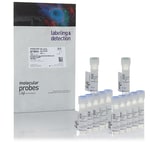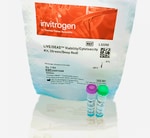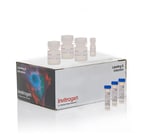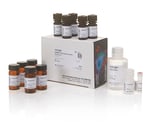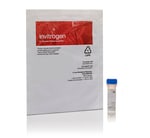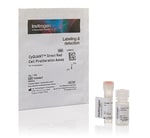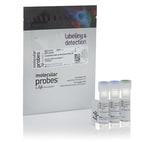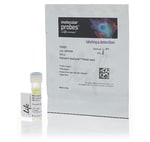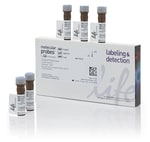Search Thermo Fisher Scientific

Cell Function Reagents and Kits
Reagents and kits to measure cell function including viability, cell proliferation, cell cycle, membrane potential assays, as well as physiological indicators for pH, calcium, magnesium, and zinc.
Products (368)
Learn More (1512)
Documents & Support
(1095)368 Products
Filter
The LIVE/DEAD™ Fixable Green Dead Cell Stain Kit is used to determine the viability of cells prior to the fixation and permeabilization required for intracellular antibody staining, or prior to elimination of biohazardous materials using formaldehyde fixation.
LIVE/DEAD™ Viability/Cytotoxicity Assay Kit (Green/Deep Red)
Works the first time, every time, in less time
CyQUANT cytotoxicity assays provide a simple and reliable method to assess chemical or cell-mediated cellular toxicity. The CyQUANT LDH Cytotoxicity Assays and the CyQUANT Cytotoxicity Assay (G6PD Release Assay) use colorimetric- or fluorescence-based detection to measure the release of cytosolic...
Since the amount of DNA in cells is highly regulated, methods to detect DNA content offer improved accuracy over metabolism-based cellular proliferation or cytotoxicity assays, which can be affected by cell changes that are unrelated to cell number.
Click-iT™ Plus EdU Alexa Fluor™ 647 Flow Cytometry Assay Kit
The LIVE/DEAD™ Fixable Far-Red Dead Cell Stain Kit is used to determine the viability of cells prior to the fixation and permeabilization required for intracellular antibody staining, or prior to elimination of biohazardous materials using formaldehyde fixation.
CellEvent™ Senescence Green Detection Kit consists of a fluorescent probe and optimized buffer that enable the image-based detection of senescent cells
A viability dye that can be used to irreversibly label dead cells prior to cryopreservation, fixation, and/or permeabilization procedures.
Labeled LDL complexes useful in studying the delivery of up to two Fe3+ atoms via receptor-mediated endocytosis
Learn More (1512)
View all
Three Invitrogen Molecular Probes fluorogenic reagents—CellROX Deep Red, CellROX Green and CellROX Orange —have been developed for the detection and quantitation of reactive oxygen species (ROS) in live cells.
Optimized real-time PCR (qPCR) analysis enables sensitive and specific quantification of nucleic acids. Reagent selection plays a critical role in any qPCR or RT-qPCR protocol to help ensure optimal performance and reliable results.
Documents & Support (1095)
View all
I'm trying to label my cells in suspension and track them over time by labeling with CFDA SE, but after labeling them they will no longer adhere to a surface (whereas unlabeled cells adhere well). I've tried to label at 10 and 20 µM. What is causing this?
I am interested in expressing some functional membrane proteins in mammalian cells. Do you offer a system that will allow me to do this?
